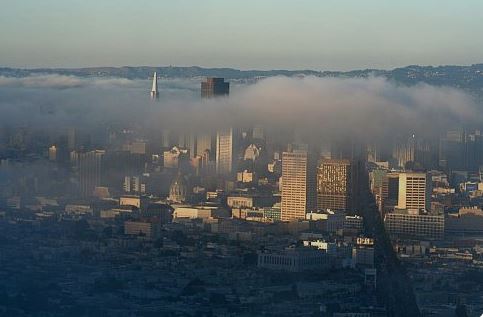Strategies for Energy-Efficient Cooling in California
Strategies for Energy-Efficient Cooling in California’s Mediterranean Climate
Strategies for energy-efficient cooling in California’s Mediterranean climate are essential for meeting today’s demand for sustainable and cost-effective building design. With its hot, dry summers and mild, wet winters, this unique climate presents both challenges and opportunities for MEP (Mechanical, Electrical, and Plumbing) engineers aiming to optimize cooling systems for performance, comfort, and environmental impact.
1. Understanding MEP Design in the Context of California’s Climate
California’s climate requires a strategic approach to MEP design. Summer heat can be intense, while winters are mild and wet. These fluctuations demand energy-efficient cooling systems that perform reliably throughout the year.
Weather patterns vary across the state. Coastal regions benefit from marine breezes and milder temperatures. In contrast, inland areas often experience extreme heat. This diversity means designers must assess local climate data closely before planning any system.
Accurate climate analysis helps determine the right cooling strategies. Solutions must minimize energy use without sacrificing comfort. That includes accounting for sun exposure, air movement, and regional temperature swings.
2. The Importance of Energy Efficiency in Cooling Systems
In California, energy-efficient cooling isn’t a luxury—it’s essential. Rising temperatures and energy costs drive the need for smarter systems. Efficient systems reduce both operational costs and environmental impact.
Building owners can benefit from high-efficiency air conditioners, smart thermostats, and variable-speed compressors. These upgrades lower bills and improve comfort, all while meeting the state’s strict energy standards.
3. The Importance of Energy Efficiency in Cooling Systems
In California’s Mediterranean climate, characterized by warm, dry summers and mild, wet winters, energy efficiency in cooling systems is not just a luxury; it’s a necessity. With rising temperatures and increasing energy costs, the demand for effective cooling solutions has never been more critical. Implementing energy-efficient cooling systems not only reduces operational expenses but also mitigates the environmental impact associated with excessive energy consumption.
Energy-efficient cooling systems are designed to maximize performance while minimizing energy usage. This is particularly important in California, where energy regulations are stringent, and environmental sustainability is a priority. By investing in high-efficiency air conditioning units, variable speed compressors, and smart thermostats, building owners can significantly lower their energy bills while maintaining optimal indoor comfort.
4. Key Characteristics of California’s Mediterranean Climate
California’s Mediterranean climate is defined by its distinct seasonal variations and unique geographical features, which play a crucial role in shaping energy-efficient cooling strategies. This climate type is characterized by warm, dry summers and mild, wet winters, creating a need for adaptable cooling systems that can handle the extremes.
During the summer months, temperatures can soar, often exceeding 90°F (32°C), with lower humidity levels that can exacerbate the heat. As a result, buildings must be designed to mitigate solar heat gain while maximizing natural ventilation. The use of overhangs, awnings, and strategically placed windows can help create a passive cooling effect, allowing for comfortable indoor temperatures without relying heavily on mechanical systems.
5. Selecting the Right Cooling System for Energy Efficiency
Selecting the right system is essential for implementing strategies for energy-efficient cooling in California’s Mediterranean climate. With temperature fluctuations that can put a strain on conventional cooling systems, understanding the nuances of your options is essential for both comfort and sustainability.
First, consider the type of cooling system that will best suit your building’s specific needs. Central air conditioning systems are popular for their ability to cool large spaces efficiently; however, they can lead to significant energy consumption if not properly sized or maintained. Ensure that your system is appropriately sized to prevent excessive energy use due to overworking, which can also lead to increased wear and tear.
6. Incorporating Passive Cooling Techniques
In the quest for energy-efficient cooling solutions, incorporating passive cooling techniques is a game changer, especially in California’s Mediterranean climate, characterized by hot, dry summers and mild, wet winters. These techniques harness natural processes to maintain comfortable indoor temperatures while significantly reducing reliance on mechanical cooling systems.
One of the most effective passive cooling strategies is the strategic placement of windows and ventilation openings. By maximizing cross-ventilation, you can create a natural airflow that dials down indoor temperatures. Positioning windows to catch prevailing breezes and using operable skylights allows hot air to escape, promoting a refreshing flow throughout the space. Adding overhangs or awnings can also shield windows from direct sunlight, reducing heat gain during the peak afternoon hours.
Thermal mass is another critical element in passive cooling design. Materials such as concrete, brick, or stone can absorb heat during the day and release it during cooler nights, stabilizing indoor temperatures. Incorporating water features, such as ponds or fountains, can further enhance this effect by cooling the surrounding air through evaporation.
7. The Role of Insulation in Energy-Efficient Design
In the quest for energy efficiency, insulation plays an indispensable role, particularly in California’s Mediterranean climate, characterized by hot, dry summers and mild, wet winters. Proper insulation acts as the first line of defense against temperature fluctuations, ensuring that heat gained during the day is kept out in the summer, while warmth is retained during cooler months. This balance not only enhances comfort but also significantly reduces the demand on cooling systems, leading to lower energy consumption and cost savings.
When designing an energy-efficient cooling system, selecting the right type of insulation is crucial. Options range from traditional fiberglass batts to modern spray foam and rigid foam boards, each offering unique properties that can dramatically impact performance. For instance, reflective insulation can be particularly beneficial in sunny California, as it reflects radiant heat away from living spaces, minimizing the need for air conditioning.
8. Utilizing Smart Technologies for Enhanced Performance
In the quest for energy-efficient cooling solutions in California’s Mediterranean climate, harnessing the power of smart technologies can make a significant difference. These advanced tools not only optimize building performance but also enhance comfort and reduce energy consumption.
Imagine a cooling system that learns your preferences and adapts to your lifestyle. Smart thermostats, such as the Nest or Ecobee, allow homeowners to set schedules and adjust temperature settings remotely through intuitive smartphone apps. These devices utilize algorithms that analyze your habits over time, ensuring that energy is used only when needed, significantly lowering utility bills without sacrificing comfort.
Moreover, integrating IoT (Internet of Things) sensors into your MEP design can provide real-time data on temperature, humidity, and air quality. This data can inform automatic adjustments to HVAC systems, ensuring they operate at peak efficiency. For example, if the indoor temperature rises due to increased outdoor heat, the system can automatically adjust to provide optimal cooling, thereby conserving energy.
9. HVAC System Design Best Practices
When it comes to HVAC system design in California’s Mediterranean climate, adopting best practices is crucial for ensuring energy efficiency and optimal performance. Given the region’s hot, dry summers and mild, wet winters, an effective HVAC system must be tailored to handle these unique temperature fluctuations. Here are some essential best practices to consider:
Load Calculation: Begin with a thorough load calculation to determine the specific heating and cooling needs of the space. Utilize software tools that follow the Manual J calculation method to account for factors such as insulation levels, window sizes, and occupancy. This ensures that your system is neither under nor oversized, which can lead to inefficiencies and discomfort.
Zoning Systems: Implement zoning systems that allow for different areas of a building to be heated or cooled independently. This is especially beneficial in larger homes or commercial spaces, where certain rooms may require more or less conditioning based on usage patterns. Zoning can significantly reduce energy consumption by ensuring that only occupied areas are climate-controlled.
High-Efficiency Equipment: Invest in high-efficiency HVAC equipment with a high SEER (Seasonal Energy Efficiency Ratio) rating. In California, where energy costs can be steep, choosing ENERGY STAR-rated systems can lead to substantial long-term savings. Additionally, consider variable-speed compressors that can adjust their output based on current demands, providing better comfort and efficiency.
10. Strategies for Optimizing Airflow and Ventilation
In California’s Mediterranean climate, optimizing airflow and ventilation is crucial for achieving energy-efficient cooling in MEP (Mechanical, Electrical, and Plumbing) design. The region’s warm, dry summers and mild, wet winters present unique challenges and opportunities for creating effective cooling systems. Here are some strategic approaches to ensure that your designs maximize airflow and ventilation while minimizing energy consumption.
Embrace Natural Ventilation: One of the most effective strategies is to take advantage of the natural breezes that often sweep through California’s coastal areas. Designing buildings with operable windows, strategically placed ventilation openings, and cross-ventilation pathways can harness these breezes to provide passive cooling. This not only reduces reliance on mechanical cooling systems but also enhances indoor air quality by allowing fresh air to circulate.
Optimize Ductwork Design: In mechanical systems, the design and layout of ductwork play a significant role in airflow efficiency. Ensuring that ducts are properly sized and installed with minimal bends and turns can reduce resistance and promote smoother airflow. Additionally, using sealed and insulated ducts can help maintain the desired temperature of the air as it travels through the system, enhancing overall energy efficiency.
Implement Zoning Systems: Zoning allows for more precise control of temperature and airflow in different areas of a building. By dividing spaces into different zones, you can tailor cooling strategies to the specific needs of each area. This not only improves comfort but also reduces energy waste by cooling only the spaces that require it.
11. Energy Modeling and Simulation Tools
When it comes to mastering MEP (Mechanical, Electrical, and Plumbing) design, leveraging energy modeling and simulation tools is a game changer, especially in California’s Mediterranean climate. These advanced technologies allow engineers and designers to create virtual models of their systems, enabling them to predict energy usage, analyze performance, and optimize designs before implementation.
By using these tools, you can simulate various environmental conditions that mimic California’s unique weather patterns—hot, dry summers and mild, wet winters. This capability is crucial for testing how different cooling strategies will perform under real-life scenarios. For instance, energy modeling can help assess the effectiveness of passive cooling techniques, such as strategically placed windows and thermal mass, or active systems like high-efficiency chillers and advanced HVAC controls.
In conclusion, mastering MEP design for energy-efficient cooling in California’s Mediterranean climate is not just a technical challenge; it’s an opportunity to create sustainable and comfortable living environments. By implementing the strategies we’ve discussed—ranging from harnessing natural ventilation and optimizing insulation to selecting the right cooling systems and employing smart technologies—you can significantly enhance energy efficiency while ensuring occupant comfort. As you embark on your design journey, remember that thoughtful planning and a proactive approach can lead to innovative solutions that benefit both the environment and your bottom line. We hope this guide serves as a valuable resource in your quest for excellence in MEP design. Here’s to creating cooler, greener spaces that stand the test of time in California’s unique climate!
Learn more https://www.browermechanical.com/blog/why-2024-year-get-heat-pump-california

















































